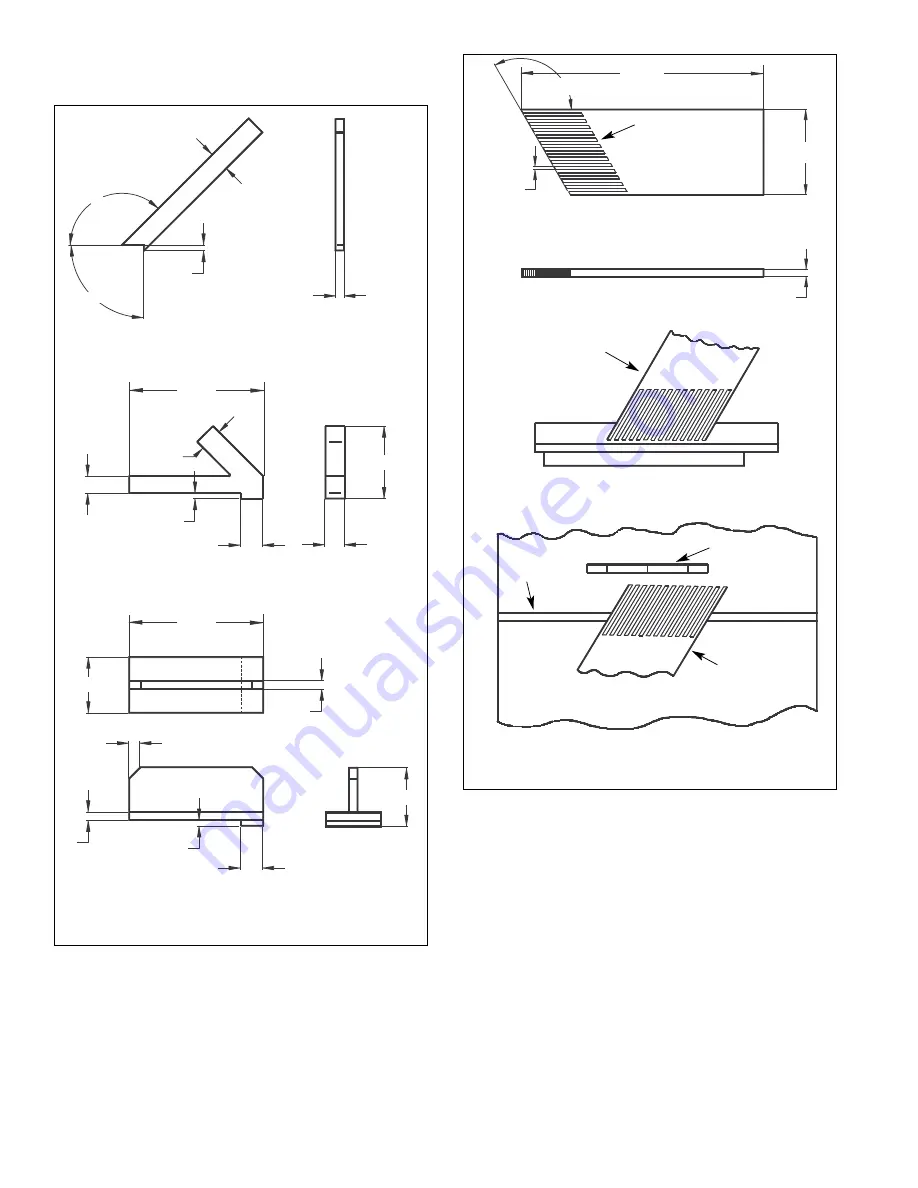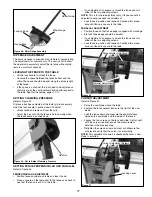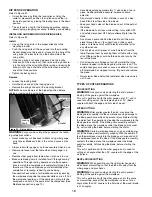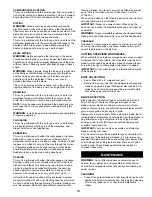
4
• Use extra care when ripping wood with twisted grain or
wood that is twisted or bowed—it may rock on table and
pinch saw blade.
KNOW YOUR CUTTING TOOLS
• Dull, gummy, improperly sharpened or set cutting tools can
cause material to stick, jam, stall saw, or kickback at oper-
ator. Minimize potential injury by proper care and machine
maintenance.
WARNING:
Never attempt to free a stalled saw blade with-
out first turning saw OFF.
• Never use grinding wheels, abrasive cutoff wheels, friction
wheels (metal slitting blades), wire wheels or buffing
wheels.
USE ONLY ACCESSORIES DESIGNED FOR SAW
• Crosscutting operations are worked more conveniently and
with greater safety if an auxiliary wood facing is attached
to miter gauge using holes provided. However, facing must
not interfere with proper functioning of saw blade guard.
• Make sure the top of the arbor or cutting tool rotates
toward you when standing in normal operating position.
Also make sure the cutting tool, blade flange and arbor
nut are installed properly. Keep the cutting tool as low as
possible for the operation being performed. Keep all
guards in place whenever possible.
• Do not use any blade or other cutting tool marked for oper-
ating speed less than 4000 RPM. Never use a cutting tool
larger in diameter than diameter for which saw was
designed. For greatest safety and efficiency when ripping,
use maximum diameter blade for which saw is designed,
since under these conditions spreader is nearest the
blade.
• Adjust table inserts flush with table top. Never operate saw
unless proper insert is installed.
24
″
5
⁄
16
″
(typ.)
120°
8
7
⁄
16
″
3
⁄
4
″
Clamp to rip fence or
rip fence extension to
keep work on the
table.
Rip Fence
Table
Blade
Clamp to table
to guide work
Use featherboards in combinations as required to control
workpieces.
Miter slot
Figure 1b - Featherboards
5
″
Long (typ.)
Solid Lumber
Figure 1a - Push Sticks and Push Blocks
135°
15
″
Long
½
″
90°
¾
″
12
″
2
″
2
″
6½
″
1¾
″
1½
″
½
″
¾
″
12
″
5
″
1
″
x 45° (2X)
¾
″
½
″
2
″
5¼
″
1¾
″





































